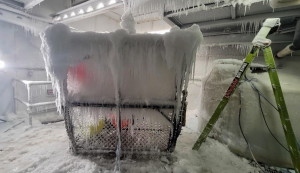U.S. Coast Guard Releases Ice Accretion Study
 The loss of the F/V SCANDIES ROSE on New Year’s Eve 2019 was the deadliest accidents since the 2017 capsizing of the F/V DESTINATION, in which all six crew members tragically died. The lawyers at Stacey and Jacobsen, PLLC understand firsthand how devastating these accidents are to those experiencing the loss of loved ones, as we represented the families and survivors in both heartbreaking cases.
The loss of the F/V SCANDIES ROSE on New Year’s Eve 2019 was the deadliest accidents since the 2017 capsizing of the F/V DESTINATION, in which all six crew members tragically died. The lawyers at Stacey and Jacobsen, PLLC understand firsthand how devastating these accidents are to those experiencing the loss of loved ones, as we represented the families and survivors in both heartbreaking cases.
These tragic sinkings and capsizing accidents are not altogether isolated. It is imperative for the safety of the industry that we better understand how ice accumulates on pot cages, netting, and the parts within each pot.
In December 2020, the U.S. Coast Guard Marine Board of Investigation requested that the U.S. Coast Guard Research and Development Center (RDC) study the icing factors that were involved in the loss of the F/V SCANDIES ROSE as well as the loss of the F/V DESTINATION. The U.S. Coast Guard recently released the results of this long awaited study regarding the ice accretion and ice accumulation on fishing gear. The study and experiments specifically focused on ice accretion and ice accumulation on the crab and cod pots used in the icy waters of the Alaskan Bering Sea.
Research teams worked at sea with the crew of the F/V POLAR STAR as well as a testing facility at U. S. Army’s Cold Regions Research and Engineering Lab, within a chamber kept below 0 degrees Fahrenheit to reproduce the conditions found at sea. An oscillating spray wand and different configurations of pots, mesh, and floats were used to measure and track ice thickness and weight in varying situations and configurations.
The report states that “In different trials, the weight of the ice accreted in the pots equaled or exceeded a pot’s original weight. In multiple-pot configurations, the top of the stack generally accreted significantly more ice than the lower pots.”
In one trial, a 1,000 pound 8-foot by 8-foot by 3-foot pot was strapped to the deck of the F/V POLAR STAR. After 48-72 hours of spray time with a mist gun that simulated sea spray, ice accumulation on the pot and netting was so significant that the iced pot maxed out the scale at 3000 pounds.
Researchers also found through another trial that pots covered by the new woven-polypropylene tarpaulins (tarps) and polyethylene sheeting during experiments showed significantly lower ice accretion than uncovered pots.
“It is our hope that these findings inform industry and policymakers to make decisions to prevent future casualties as a result of asymmetrical icing,” said Captain Greg Callaghan, Eleventh Coast Guard District Chief of Prevention, and FV Scandies Rose Marine Board of Investigation Chairman. “We are grateful for the team at RDC who worked tirelessly to support the Scandies Rose MBI, from our initial interaction to coordinate the experiment on the Polar Star, to the planning and execution of the Ice Accretion Study. Their efforts have provided significant insight critical to saving lives in this industry.”
The report goes on to recommend that the Marine Board of Investigation issue “an examination of regulatory stability requirements pertaining to deck loading of frame and mesh fishing pots when a vessel can expect icing conditions.”
The study concluded that the 130-foot F/V SCANDIES ROSE experienced a loss of stability, possibly due to asymmetrical icing. This in addition to unintentionally over stacked ice-laden pots was a factor to this tragic sinking. The Marine Board of Investigation also noted in the 2017 investigation of the F/V DESTINATION, that loss of stability and rapid capsizing was directly due to excessive icing.
We invite readers to review the entire Ice Accretion Study report at https://bit.ly/38pMTFc .
 Maritime Injury Law Blog
Maritime Injury Law Blog

